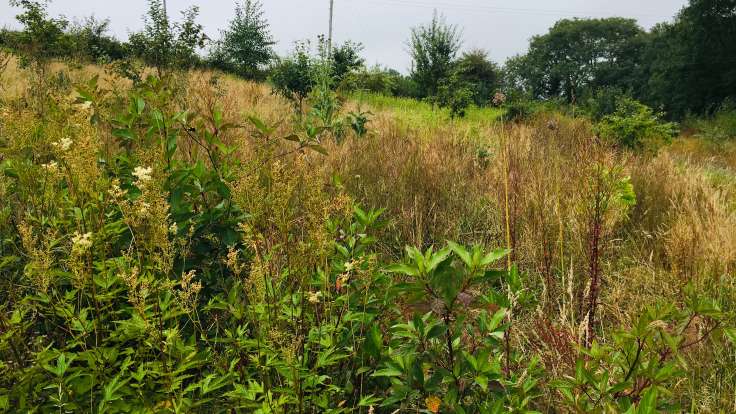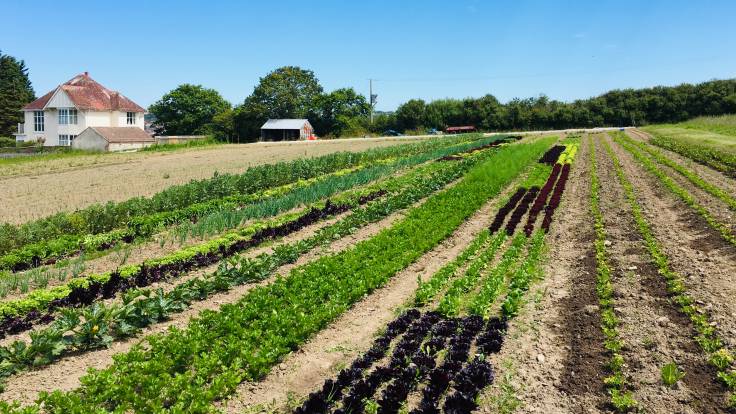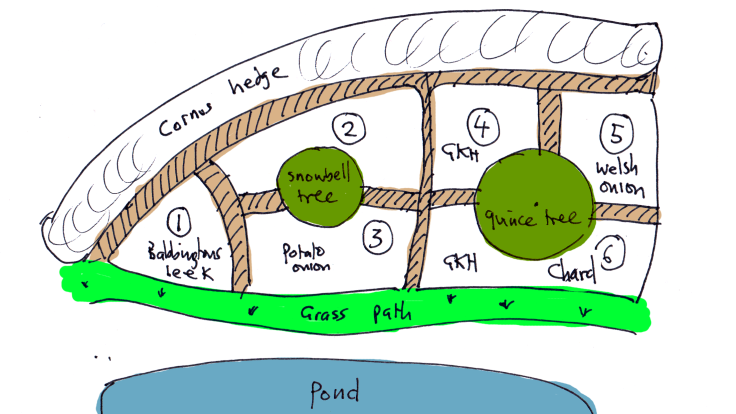
There is a forest garden there somewhere, in amongst the stubbly growth
Other work in my life has meant a slow down in the forest garden but the trees still grow and the wildlife prospers. Letting go can be a hard but necessary lesson.
The all-summer-rolling forest garden tours and workshops via Airbnb were always a bit of a gamble. It hasn’t really paid off, which means I’ve taken on some part-time work for the local market garden.
The lessons from the land have been twofold: firstly, commercial market gardening is intensive and laborious. Secondly, you can neglect a forest garden for quite a while. The trees still grow, the wildlife prospers, it just means a few more docks and a bit more weeding.

Uniformity in a market garden makes it more efficient. Have you tried rapidly hoeing several hundred wiggly vegetables?!
Glebelands market garden is run organically and along vegan principles (no cow muck, no shooting the pigeons), but it has to be intensive and efficient to be profitable. It’s hard work: watering, hoeing, harvesting, prepping the beds. And I have learned a vast amount about hot composting, planting and looking after the soil.
What I didn’t expect was for my attention to be redoubled on creating productive perennial vegetable areas in the forest garden. Luminaries such as Stephen Barstow (@s_barstow), Alison Tindale (@BackyardLarder), Mandy Barber (@IncredibleVeg) and Martin Crawford (@AgroforestryT) have done so much groundwork for perennial veg, just take a look at the wealth of information on their websites.
My challenge has been to take that information and create a working perennial veg patch in amongst the forest garden, one which other members of the family can easily navigate yet will also be productive with far less labour than annual veg.

Artist’s (sic) impression of new perennial veg patch in forest garden
For me, this is a design issue. It’s not about specific perennials, it’s more about how the veg patch sits in relation to the polytunnel, house and kitchen. I’m making the beds narrower with woodchip paths to improve access, and I’m adding compost mulch to help establish plants like Chard and Allium. I’ll also be adding big wooden signs saying things like ”Salad!👀” and “Spinach!!👈”. This is so I can send the children out to forage-by-numbers, so to speak.
And herein lies the paradox. By letting go control of the forest garden for a while, I’ve been filled with new ideas fuelled by old methods for a more useful and productive forest garden.
🙂